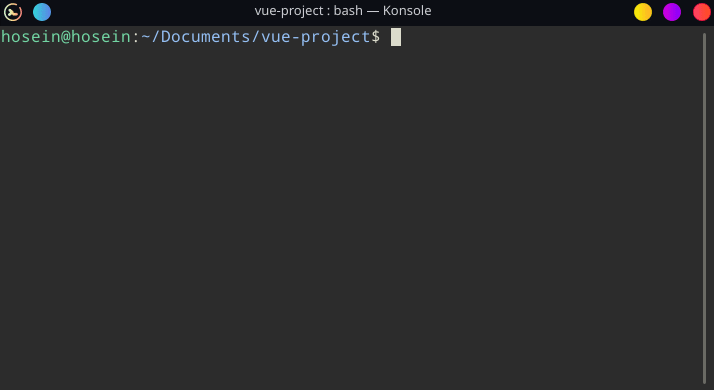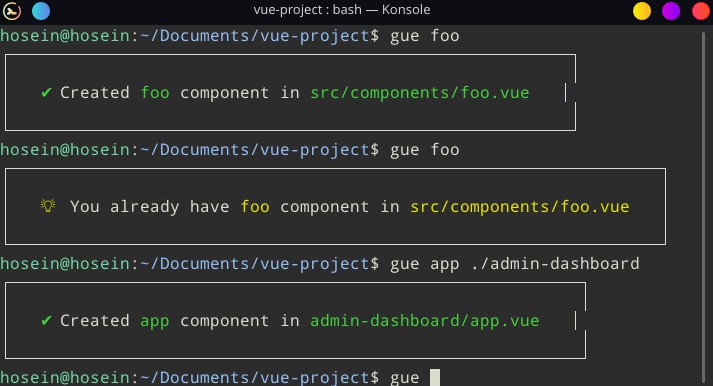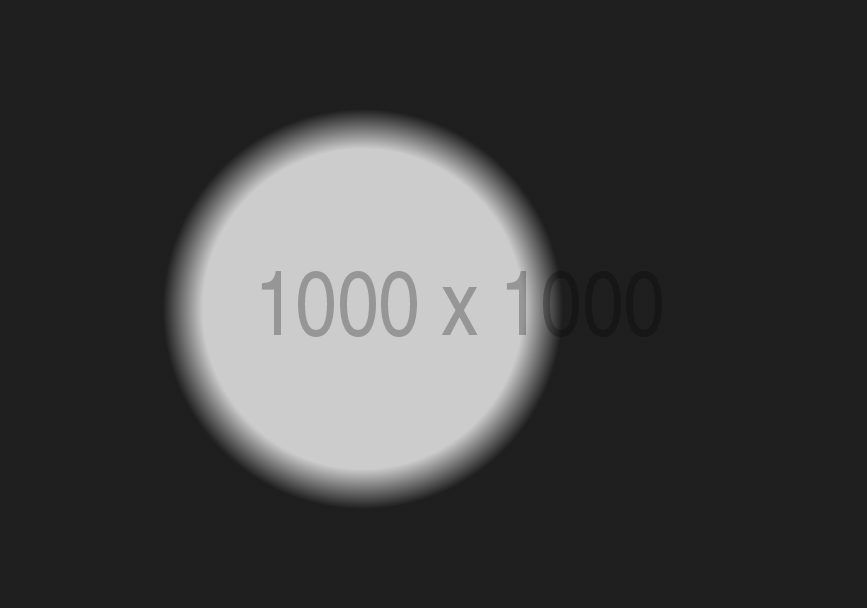Gue
Vue js component generator.

Features
- ? Generate Vue component
- ? Generate test file for the component
- ⚙️ Dynamic path for component
- ? Configurable root directory for components and tests
- ? Custom templates for components and test
Installing
Note that this package is published under name of
vue-gue
npm i -g vue-gue
Getting started
Head over to root of your project in terminal, say you want to create a component named footer:
gue footer
This will generate footer component in ./src/components/footer.vue
Change directory of component
You can define a directory which you want your component to be generated in.
gue tab ./menu
This will generate tab component in ./menu/tab.vue
Consider behavior of directory parameter when you have a config file and you don't. details
For a consistent way to change root directory of components see config.
Generate test file
Now if you want a component and also it's corresponding unit test file you can do:
gue footer -u
This will generate footer component in ./src/components/footer.vue and also a test file in ./tests/unit/footer.js
To change any of these directories see config
Usage
General usage is like:
gue <componentName> [directory] [options]
- <componentName> is mandatory.
- [directory] is optional, and is a relative path.
If you have a config file this will be asubdirectoryof your componentRoot
If you don't, then this will lead to generation of component in exactdirecroty - [options] are optional, only available option is
-uwhich will generate test file.
Config file
Gue accepts a config file to change default settings. In root directory of project make a file gue.json, and Gue will automatically recognize and use it.
Options
Here are available options for config file:
componentRoot: root directory which components will be generated in. should be relative path.componentSource: path to custom component template.unitRoot: directory which test will be generated in. should be a relative path.unitSource: path to custom test file template.
An example of a config file with all options:
{
"componentRoot":"./front-end/src/components",
"unitRoot":"./front-end/test",
"componentSource":"./myTemplates/myVueTemplate.vue",
"unitSource":"./myTemplates/myTestTemplate.js"
}
Now if you run gue to create a clock component in your project, it'll generate it in ./front-end/src/components/clock.vue.
If you run following command in the same project:
gue title ./header
Will generate ./front-end/src/components/header/title.vue
Custom templates
As said you can use custom templates in Gue, define path to them with componentSource and unitSource so that Gue will use them instead of it's default ones.
Variables
In your component template you can use variable <%NAME%> and Gue will replace it with name of component when generating.
And also in test template you use <%NAME%> and <%PATH%> which will be replaced with path where component is located, relative to path of test file.
Here is an example of custom component template:
<template>
<div class="app">
Hey I'm a component generated with Gue, my name is <%NAME%>
</div>
</template>
export default {
name: "<%NAME%>",
data() {
return {
someData: "a sample"
}
}
<style scoped>
</style>
To see other examples look at templates folder.





